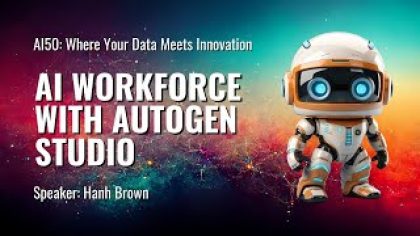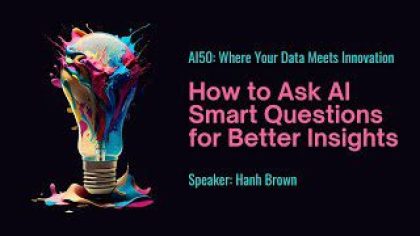Table of Contents
ToggleAs the global population ages, the importance of robust, supportive communities becomes even more crucial in maintaining seniors’ physical, mental, and emotional well-being. Social connections and access to essential resources, such as healthcare, community services, and social events, play a significant role in enabling older adults to age in place successfully. Artificial intelligence (AI) and machine learning technologies offer enormous potential in bridging the gap in resource access for seniors; however, ensuring equal access to these technologies remains a pressing challenge.
AI has the potential to revolutionize the way seniors access resources by providing personalized recommendations, streamlining the search for local services, and nurturing social connections. Through AI-driven resource suggestions and AI-powered social networking platforms, older adults can more easily engage with their communities and find the support they require. These technologies can also assist in identifying potential health risks and matching seniors with the most suitable healthcare providers and services.
Nevertheless, the reality is that not all seniors have equal access to AI solutions. A digital divide exists, and technological barriers disproportionately affect older adults. This disparity in resource access can significantly hinder the potential benefits that AI technology offers to this demographic. Issues such as limited internet access, inadequate digital literacy, and financial constraints can prevent seniors from fully utilizing AI-driven resources.
In this article, we will discuss how ai can be helpful in bridging senior resource access in various ways. Let’s get started.
AI in Bridging Senior Resource Access: AI-Driven Resource Recommendations

AI-driven resource recommendations offer a powerful solution for connecting seniors to the support and services they need, taking into account their unique needs and circumstances. By harnessing the power of machine learning algorithms and vast amounts of data, AI can personalize resource suggestions and connect seniors to local services and programs tailored to their specific requirements.
Personalized Resource Suggestions for Seniors
AI-driven resource recommendation systems can help seniors navigate the often complex and fragmented landscape of available resources. These systems gather information about seniors’ preferences, interests, and needs, as well as their location, to provide a tailored list of resources. This can include healthcare providers, social activities, transportation services, and more.
For example, a senior with mobility issues might receive recommendations for nearby physical therapy centers, accessible transportation options, and social events specifically designed for individuals with similar challenges. This personalized approach ensures that seniors are not overwhelmed by irrelevant information and can quickly access the resources most relevant to them.
The use of AI also allows these recommendation systems to learn and adapt over time. As seniors interact with the system, the AI can refine its suggestions, making them even more relevant and accurate. This continuous improvement ensures that seniors receive the most up-to-date and suitable resource recommendations, empowering them to make informed decisions about their care and support.
Connecting Seniors to Local Services and Programs
In addition to personalizing resource suggestions, AI-driven recommendation systems can also connect seniors to local services and programs. By leveraging location data and analyzing community resources, AI can identify nearby opportunities for seniors to engage with their community and access essential services.
Local services and programs might include community centers, senior centers, exercise classes, volunteer opportunities, or support groups. Connecting seniors to these resources not only helps them maintain their well-being but also fosters a sense of belonging and social connectedness, which is crucial for healthy aging.
AI-driven systems can also help bridge the information gap between seniors and service providers. By aggregating data on available services and presenting it in an easily digestible format, AI can simplify the process of finding and connecting with local programs. This ensures that seniors are not only aware of the resources in their community but are also able to access them with ease.
In summary, AI-driven resource recommendations have the potential to revolutionize the way seniors access and engage with resources, both personalized and local. By harnessing the power of AI, these systems can provide targeted, relevant, and easily accessible information, empowering seniors to take control of their well-being and maintain strong connections with their communities.
AI in Community Building and Social Connections
Artificial intelligence plays a significant role in fostering community building and social connections for seniors. AI-powered social networking platforms and virtual assistants are transforming the way older adults interact with others, helping them maintain social connections and combat isolation.
AI-Powered Social Networking Platforms
There are different AI-powered social networking platforms that offer unique benefits for seniors, enabling them to connect with like-minded individuals, engage in discussions, and participate in activities tailored to their interests. These platforms use AI algorithms to analyze users’ profiles, interests, and activities, creating personalized feeds and connecting seniors with relevant content and individuals.
For example, an AI-powered social platform might connect seniors with similar hobbies, such as gardening or painting, by suggesting relevant groups, forums, or events. These connections facilitate the exchange of ideas, knowledge, and experiences, fostering a sense of belonging and camaraderie among seniors.
Additionally, AI can help ensure the safety and well-being of seniors on these platforms. By monitoring conversations and flagging inappropriate or harmful content, AI can create a safe and supportive environment for seniors to interact and engage with their peers.
The combination of personalized content and safety measures makes AI-powered social networking platforms an invaluable tool for seniors looking to build and maintain social connections in a digital age.
Virtual Assistants and Social Engagement
Virtual assistants, such as Amazon’s Alexa or Google Assistant, can also play a significant role in promoting social engagement among seniors. These AI-powered devices can help older adults stay connected with family and friends by facilitating video calls, sending messages, and sharing photos. This technology enables seniors to maintain close relationships with their loved ones, even when physical distance separates them.
Moreover, virtual assistants can help seniors access information and resources related to their interests or needs. For instance, a senior interested in local history can ask their virtual assistant for information on nearby historical sites, museums, or events. This can lead to increased social engagement, as seniors can attend events or join clubs related to their interests.
Virtual assistants can also support seniors in their daily lives by providing reminders for appointments, medication schedules, and daily tasks. This assistance can reduce the cognitive load on seniors, allowing them to focus on social interactions and activities that enrich their lives.
By providing support, information, and connectivity, virtual assistants have the potential to significantly impact seniors’ social engagement, helping them maintain strong connections with their communities and loved ones. Through AI-powered social networking platforms and virtual assistants, seniors can overcome barriers to socialization and lead more connected, fulfilling lives.
AI in Bridging Senior Resource Access and Digital Divide for Seniors

While AI technology offers numerous benefits for seniors, the digital divide remains a significant challenge, preventing many older adults from accessing these resources. Bridging this divide involves overcoming technological barriers and implementing digital literacy programs and initiatives to ensure that seniors can fully benefit from AI-driven solutions.
Overcoming Technological Barriers
One of the primary barriers faced by seniors when it comes to adopting AI technology is the complexity and unfamiliarity of these tools. To overcome this obstacle, developers and designers must prioritize user-friendly interfaces and intuitive systems that cater to seniors’ unique needs and preferences.
For example, incorporating features such as larger text, high-contrast colors, and voice commands can make AI-driven platforms more accessible for seniors with visual impairments or motor difficulties. Similarly, designing AI-powered tools with simplified menus and step-by-step guidance can help seniors navigate new technology more confidently.
Another essential aspect of overcoming technological barriers is providing seniors with access to affordable devices and reliable internet connections. Public-private partnerships and government initiatives can help ensure that seniors have the necessary infrastructure to engage with AI-driven solutions, reducing the disparities in access to these technologies.
Digital Literacy Programs and Initiatives
Digital literacy programs and initiatives play a crucial role in bridging the digital divide for seniors. By offering targeted training and support, these programs can empower seniors to confidently use AI-driven tools and resources.
One approach to promoting digital literacy among seniors is through community-based programs. Libraries, senior centers, and community organizations can offer workshops and classes tailored to seniors, covering topics such as using AI-driven resource recommendation systems, navigating AI-powered social networking platforms, and interacting with virtual assistants.
These programs should focus on hands-on learning, giving seniors the opportunity to practice using new technology under the guidance of knowledgeable instructors. Providing ongoing support, such as one-on-one tutoring or help hotlines, can also be beneficial in addressing seniors’ questions and concerns as they arise.
Another important aspect of digital literacy initiatives is raising awareness among seniors about the benefits and potential risks of AI technology. By providing seniors with accurate and relevant information, they can make informed decisions about the use of AI-driven tools in their lives.
Overall, bridging the digital divide for seniors involves addressing both technological barriers and digital literacy gaps. By creating user-friendly AI tools, ensuring access to affordable devices and internet connections, and implementing comprehensive digital literacy programs, seniors can more fully embrace AI-driven solutions and enjoy the many benefits they offer.
Real-Life Examples and Anecdotes

Real-life examples and anecdotes can help illustrate the positive impact of AI technology on seniors’ lives and demonstrate the potential of AI-driven solutions in addressing their unique needs and challenges.
A Senior Benefiting From Ai-Driven Resource Recommendations
Meet Alice, an 80-year-old senior living alone in her suburban home. After her husband passed away, she found it difficult to navigate the numerous available resources in her community. However, an AI-driven resource recommendation system helped Alice discover a nearby senior center offering various activities, including art classes and support groups. The personalized suggestions enabled her to find the resources she needed to stay socially connected and maintain her well-being.
Ai-Powered Social Platforms Connecting Seniors in a Community
John, a 75-year-old retiree, recently moved to a new city and struggled to make new friends. He joined an AI-powered social platform designed for seniors, which connected him to a local gardening club based on his interests. Through the platform, he met like-minded individuals, participated in club activities, and formed meaningful relationships. This AI-driven connection helped John overcome social isolation and integrate into his new community.
A Successful Digital Literacy Program for Older Adults
The Silver Surfers program, an initiative by a local community organization, focuses on improving digital literacy among older adults. Through hands-on workshops, seniors learn to use AI-powered tools like virtual assistants, social networking platforms, and resource recommendation systems. Participants report increased confidence in navigating technology, with many actively using AI-driven solutions to stay connected and access resources. The Silver Surfers program showcases the potential of digital literacy initiatives in empowering seniors to embrace AI technology and enhance their quality of life.
Implications and Future Developments
As AI technology continues to advance, the potential for addressing seniors’ social isolation and resource accessibility increases. However, the ongoing challenge of ensuring equal access to AI solutions remains a significant concern that must be addressed to harness AI’s full potential in supporting seniors.
The Potential of AI in Addressing Social Isolation and Resource Accessibility
The growing sophistication of AI-driven tools offers promising possibilities for mitigating social isolation and enhancing resource accessibility among seniors. For example, AI-powered platforms could be used to identify at-risk individuals in need of additional support or to match seniors with compatible companions for socialization.
Additionally, advancements in AI technology could enable even more precise and personalized resource recommendations, taking into account an individual’s health status, financial situation, and cultural background. This could lead to more effective and targeted interventions that improve seniors’ overall well-being.
In the future, we may also see AI integrated into existing community services and programs, such as home care services or transportation systems, enabling these resources to better serve seniors’ unique needs and preferences. The potential for AI to revolutionize the way seniors access resources and maintain social connections is vast, with many exciting developments on the horizon.
The Ongoing Challenge of Ensuring Equal Access to AI Solutions
Despite AI’s potential to improve seniors’ lives, the challenge of ensuring equal access to these solutions remains a critical concern. Many seniors, particularly those in low-income or rural communities, may lack access to affordable internet connections or the necessary devices to engage with AI-driven tools. Addressing this digital divide requires concerted efforts from both the public and private sectors to ensure that seniors, regardless of their socioeconomic background, can access AI technology.
Furthermore, the issue of digital literacy must also be tackled to ensure that seniors can fully benefit from AI-driven solutions. Ongoing support and education initiatives are necessary to help seniors navigate AI technology and understand its potential benefits and risks.
Finally, the ethical implications of AI in serving seniors must be carefully considered. Issues such as data privacy, algorithmic bias, and the potential for social isolation resulting from overreliance on AI-driven tools must be addressed to ensure that AI solutions genuinely serve seniors’ best interests.
As AI continues to play an increasingly significant role in supporting seniors, it is crucial to address the ongoing challenge of ensuring equal access to these solutions. By tackling the digital divide, promoting digital literacy, and carefully considering ethical implications, we can work towards a future in which AI technology truly empowers seniors to lead connected, fulfilling lives.
Conclusion
In conclusion, AI technology holds immense potential for revolutionizing the way seniors access resources and foster social connections. By offering personalized resource recommendations, enhancing community building through AI-powered platforms, and providing virtual assistance for social engagement, AI-driven solutions can have a profoundly positive impact on seniors’ lives.
However, it is crucial to address the digital divide and ensure equal access to AI technology for all seniors, regardless of their socioeconomic background or digital literacy level. Communities must collaborate with the public and private sectors to provide affordable devices, reliable internet connections, and tailored digital literacy programs for seniors.
Additionally, ethical considerations such as data privacy, algorithmic bias, and the potential for social isolation resulting from overreliance on technology should be addressed in AI development to ensure that AI solutions genuinely serve seniors’ best interests. Caregivers and family members play a crucial role in supporting seniors’ use of AI technology and can help bridge the gap between seniors and the benefits of AI-driven solutions.
In the future, the integration of AI into existing community services and programs, such as home care services or transportation systems, may further enhance the ability of these resources to serve seniors’ unique needs and preferences. By tackling the digital divide, promoting digital literacy, and carefully considering ethical implications, we can work towards a future in which AI technology truly empowers seniors to lead connected, fulfilling lives, and strengthens the communities they are a part of.
FAQs
How can AI help seniors access resources and services?
AI can help seniors access resources and services by providing personalized recommendations, connecting them to local services and programs, and enhancing social connections through AI-powered platforms tailored to their unique needs and interests.
What are the challenges faced by seniors in adopting AI technology?
Seniors may face challenges in adopting AI technology due to the digital divide, technological barriers, and gaps in digital literacy. Ensuring access to affordable devices, user-friendly interfaces, and targeted digital literacy programs can help address these challenges.
How can the digital divide be addressed for seniors?
The digital divide for seniors can be addressed by ensuring access to affordable devices and reliable internet connections, designing user-friendly AI-driven tools, and implementing comprehensive digital literacy programs tailored to their needs.
Are there any potential drawbacks to AI-driven resource recommendations?
Potential drawbacks of AI-driven resource recommendations include issues of data privacy, algorithmic bias, and overreliance on technology that could lead to social isolation. Ensuring ethical considerations are addressed in AI development can help mitigate these risks.
How can communities ensure equal access to AI solutions for seniors?
Communities can ensure equal access to AI solutions for seniors by promoting public-private partnerships and government initiatives that provide affordable devices and internet connections and by offering digital literacy programs tailored to seniors’ unique needs.
What role can caregivers and family members play in supporting seniors’ use of AI technology?
Caregivers and family members can play a crucial role in supporting seniors’ use of AI technology by assisting with device setup and navigation, encouraging participation in digital literacy programs, and providing ongoing support and guidance as needed.
References
- https://nlmdirector.nlm.nih.gov/
- https://quantilus.com/
- https://www.weforum.org/


















3 Comments
[…] Also read: AI in Bridging Senior Resource Access & Tackling Inequality […]
[…] Also read: AI in Bridging Senior Resource Access & Tackling Inequality […]
[…] However, it’s essential to ensure that these AI tools are user-friendly for all age groups. Training and support should be provided to ensure that older workers can use these tools effectively. After all, an inclusive workplace is one where everyone has equal access to opportunities and resources. […]